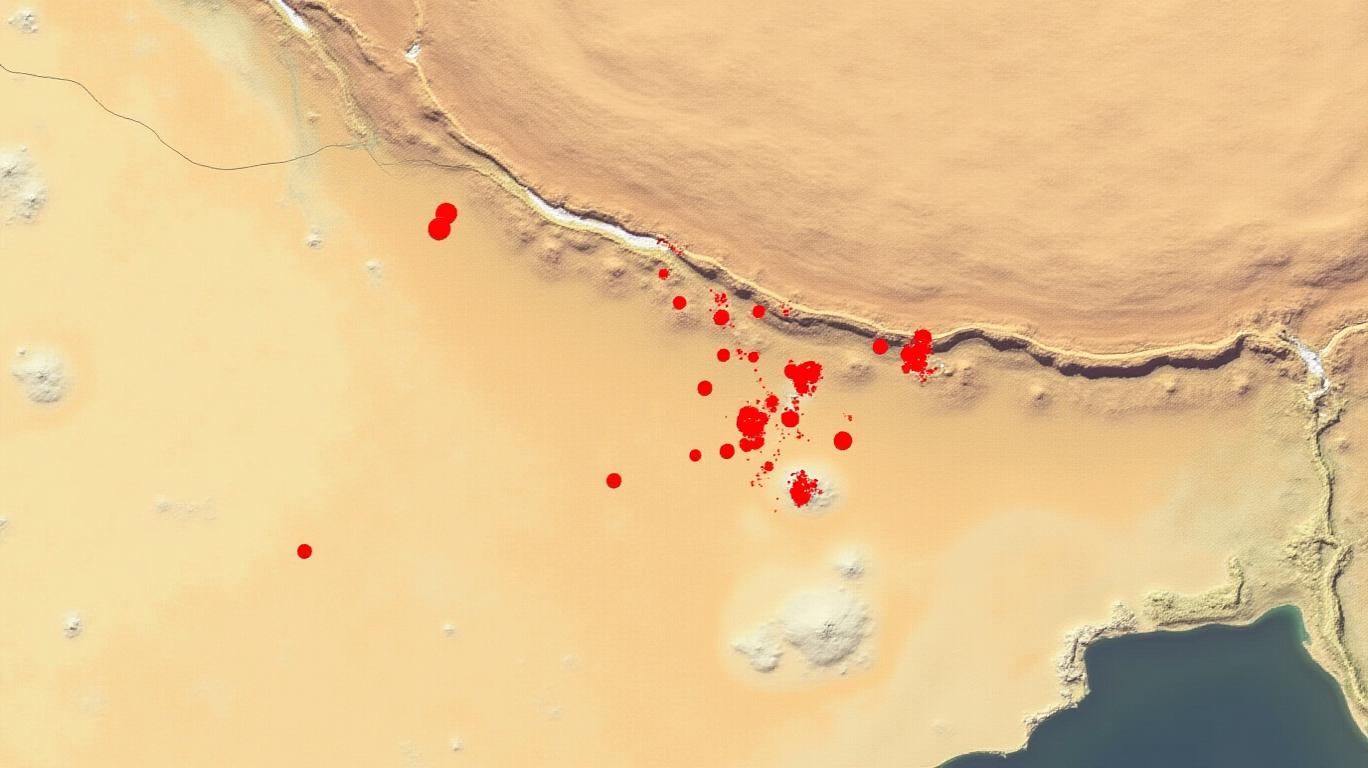The Indian Rupee's Fragile Rebound: Navigating Geopolitical Storms and Monetary Crosscurrents
The Indian rupee (INR) has long been a barometer of the nation’s economic and geopolitical stability. In May , however, it faced a dual test: escalating India-Pakistan tensions and shifting global monetary dynamics. While the currency’s sharp decline to 84.82 per dollar on May 6 highlighted vulnerabilities, analysts argue that recovery is possible—if the right conditions align. Here’s why investors should pay close attention.

The Geopolitical Gauge: Operation Sindoor’s Market Impact
The trigger for recent volatility was Operation Sindoor, India’s retaliatory missile strikes on nine militant targets in Pakistan, including facilities linked to groups responsible for the Pahalgam attack that killed 26 civilians. Pakistan’s threats of retaliation—voiced by Defense Minister Khawaja Muhammad Asif—sparked immediate risk-off sentiment. The rupee fell 39 paise on May 6, its worst single-day drop in a month, as investors flocked to dollars. Yet, the lack of immediate escalation provided a reprieve: traders noted intermittent dollar sales by state-run banks, likely on behalf of the Reserve Bank of India (RBI), to stabilize the currency.
The fear, however, remains that prolonged tensions could reignite volatility. Analysts at Morgan Stanley warned that a full-scale conflict could push the INR toward 85.50—a level not seen since early 2024. For now, foreign investors have remained net buyers of Indian equities, injecting $474.5 million on May 6, suggesting limited panic. But as show, the currency’s trajectory is fragile.
The Fed’s Shadow Over Emerging Markets
The rupee’s struggles are not solely India’s fault. The Federal Reserve’s cautious tone in May—a hold on rates at 4.25%–4.50% but warnings about inflation—has bolstered the U.S. dollar. The Dollar Index (DXY) surged to 99.70, squeezing emerging-market currencies. India’s central bank, meanwhile, faces a dilemma: support growth amid a GDP slowdown to 6.5% (from 8.2% in FY2023) or preemptively raise rates to stem capital flight. The RBI’s preference for growth, underscored by inflation hitting a five-year low of 4.1%, has fueled expectations of rate cuts by year-end—a tailwind for the rupee’s long-term recovery but a headwind in the near term.
Technicals: Bearish Momentum, but a Glimmer of Hope
Technical traders point to a bearish USD/INR pattern, with the pair hovering near 84.70 within a descending channel. The 14-day RSI below 50 signals sustained downward pressure, and a breakdown below 84.00 could test the eight-month low of 83.76. Yet, resistance at the nine-day exponential moving average (EMA) at 84.70 offers a potential rebound target toward 86.10. Crucially, the RBI’s liquidity management—via open market operations (OMOs)—has kept bond yields stable at 6.30%–6.40%, limiting bond-market spillover effects.
The Equilibrium Equation: Why Recovery is Possible
Despite the risks, three factors could catalyze a rupee rebound:
1. Geopolitical Cooling: If Pakistan refrains from retaliatory strikes and dialogue resumes, risk aversion could ease.
2. Fed Pivot: Should the Fed signal a July rate cut—as hinted by the CME FedWatch Tool’s 68% probability—the dollar’s rally could stall.
3. Domestic Momentum: India’s HSBC Composite PMI of 59.7 in April signals strong private-sector expansion, a tailwind for growth and investor confidence.
Conclusion: Navigating the Crossroads
The rupee’s fate hinges on balancing geopolitical uncertainty with macroeconomic fundamentals. While the currency faces near-term pressure from both India-Pakistan tensions and the Fed’s hawkish undertones, its recovery is far from impossible. A resolution to regional conflict, coupled with a Fed pivot and sustained private-sector growth, could push the rupee back toward pre-May levels.
Consider this: In 2020, the INR dropped to 76.94 amid the pandemic and U.S.-India trade tensions—only to rebound to 75.00 within months as volatility subsided. Today’s context is different, but the lesson holds: geopolitical risks are episodic, while economic fundamentals endure.
Investors should monitor , while keeping a watchful eye on the USD/INR channel. For now, the rupee’s story remains one of resilience amid uncertainty—a theme familiar to those who’ve navigated emerging markets before.
Andrew Ross Sorkin is a pseudonym for a seasoned financial journalist. The views expressed are based on publicly available data and do not constitute investment advice.

Comments
No comments yet